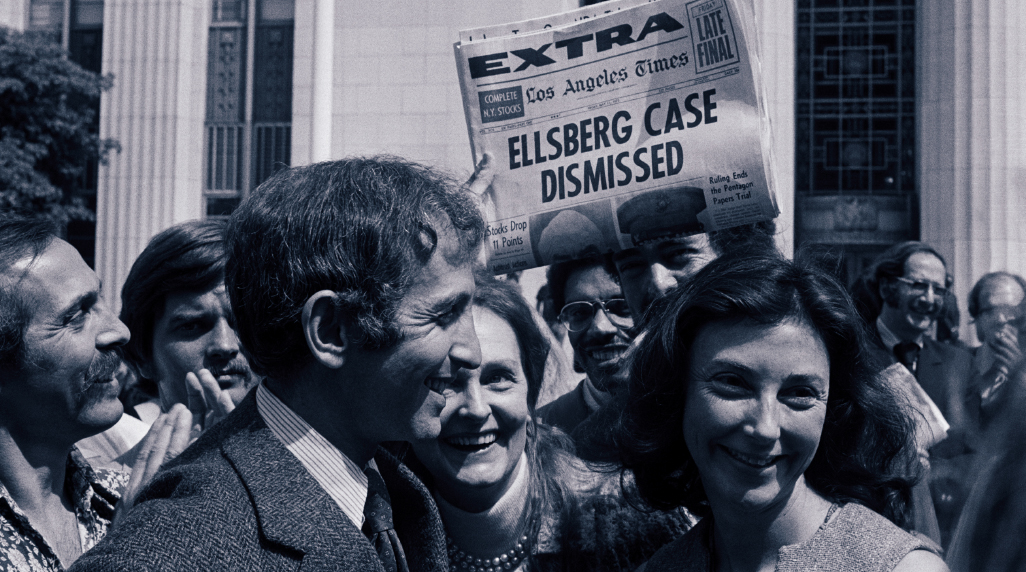Censorship as Prior Restraint
In the United States, the First Amendment has theoretically prohibited censorship. Over time, Supreme Court decisions have defined censorship as prior restraint. This means that courts and governments cannot block any publication or speech before it actually occurs, on the principle that a law has not been broken until an illegal act has been committed. In 1931, for example, the Supreme Court determined in Near v. Minnesota that a Minneapolis newspaper could not be stopped from publishing “scandalous and defamatory” material about police and law officials whom they felt were negligent in arresting and punishing local gangsters.10 However, the Court left open the idea that the news media could be ordered to halt publication in exceptional cases. During a declared war, for instance, if a U.S. court judged that the publication of an article would threaten national security, such expression could be restrained prior to its printing. In fact, during World War I the U.S. Navy seized all wireless radio transmitters. This was done to ensure control over critical information about weather conditions and troop movements that might inadvertently aid the enemy. In the 1970s, though, the Pentagon Papers decision and the Progressive magazine case tested important concepts underlying prior restraint.
The Pentagon Papers Case
In 1971, with the Vietnam War still in progress, Daniel Ellsberg, a former Defense Department employee, stole a copy of the forty-seven-volume report “History of U.S. Decision-Making Process on Vietnam Policy.” A thorough study of U.S. involvement in Vietnam since World War II, the report was classified by the government as top secret. Ellsberg and a friend leaked the study—nicknamed the Pentagon Papers—to the New York Times and the Washington Post. In June 1971, the Times began publishing articles based on the study. To block any further publications, the Nixon administration applied for and received a federal court injunction against the Times, arguing that the publication of these documents posed “a clear and present danger” to national security.
A lower U.S. district court supported the newspaper’s right to publish, but the government’s appeal put the case before the Supreme Court less than three weeks after the first article was published. In a six-to-three vote, the Court sided with the newspaper. Justice Hugo Black, in his majority opinion, attacked the government’s attempt to suppress publication: “Both the history and language of the First Amendment support the view that the press must be left free to publish news, whatever the source, without censorship, injunctions, or prior restraints.”11 (See “Media Literacy and the Critical Process: Who Knows the First Amendment?”.)

In 1971, Daniel Ellsberg surrendered to government prosecutors in Boston. Ellsberg was a former Pentagon researcher who turned against America’s military policy in Vietnam and leaked information to the press. He was charged with unauthorized possession of top-secret federal documents. Later called the Pentagon Papers, the documents contained evidence on the military’s bungled handling of the Vietnam War. In 1973, an exasperated federal judge dismissed the case when illegal government-sponsored wiretaps of Ellsberg’s psychoanalyst came to light during the Watergate scandal.
The Progressive Magazine Case
The issue of prior restraint for national security surfaced again in 1979, when an injunction was issued to block publication of the Progressive, a national left-wing magazine, in which the editors planned to publish an article entitled “The H-Bomb Secret: How We Got It, Why We’re Telling It.” The dispute began when the editor of the magazine sent a draft to the Department of Energy to verify technical portions of the article. Believing that the article contained sensitive data that might damage U.S. efforts to halt the proliferation of nuclear weapons, the Energy Department asked the magazine not to publish it. When the magazine said it would proceed anyway, the government sued the Progressive and asked a federal district court to block publication.
Judge Robert Warren sought to balance the Progressive’s First Amendment rights against the government’s claim that the article would spread dangerous information and undermine national security. In an unprecedented action, Warren sided with the government, deciding that “a mistake in ruling against the United States could pave the way for thermonuclear annihilation for us all. In that event, our right to life is extinguished and the right to publish becomes moot.”12 During appeals and further litigation, several other publications, including the Milwaukee Sentinel and Scientific American, published their own articles related to the H-bomb, getting much of their information from publications already in circulation. None of these articles, including the one eventually published in the Progressive—after the government dropped the case during an appeal—contained the precise technical details needed to actually design a nuclear weapon, nor did they provide information on where to obtain the sensitive ingredients.
Even though the article was eventually published, Warren’s decision stands as the first time in American history that a prior-restraint order imposed in the name of national security actually stopped the initial publication of a controversial news report.